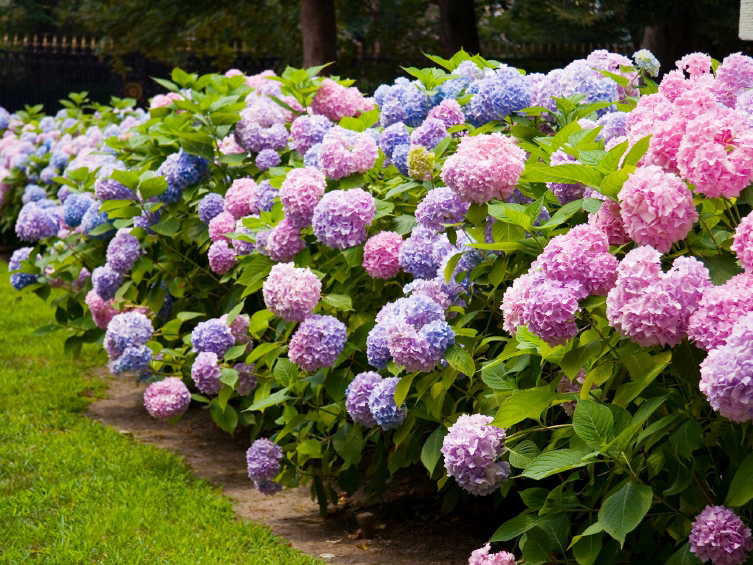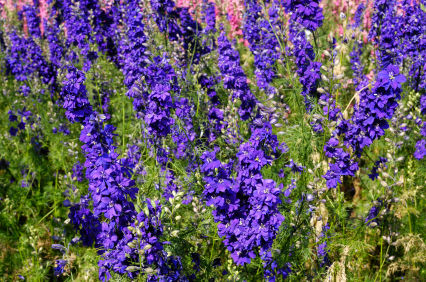While you're spring planting, you may have your eye on the stuff that brings the most coverage or color. Who doesn't want big, bright, beautiful blooms all over the yard?
But, some plants can also bring unintended consequences. That gorgeous bush with the deep purple flowers that would make for such a lovely view right outside your kitchen window might not seem so great when you hear about what it can do to your kids, your dogs, or both.
"Your garden may be a relaxing retreat, but it's not a place to let your guard down, especially when it comes to small children and the family pet," said This Old House. "Some popular plants you prize for their ornamental beauty can turn into toxic killers within minutes if ingested, whether consumed out of curiosity or by mistake."
Rhododendron
Rhododendron's bold flowers that bloom from winter through summer are tempting. The problem? The entire plant is deadly.
"Swallow any part of this plant, and you're going to look as bad as you feel," said This Old House. "While drooling from the mouth and teary-eyed, you'll begin vomiting violently, just as your pulse slows down and low blood pressure sets in. Death can occur shortly after falling into a coma or during a violent seizure."

Wikipedia
Hydrangea
Who doesn't love the way hydrangeas look, with their dreamy clusters of lush flowers? Unfortunately, the dream can turn into a nightmare if swallowed. Hydrangeas can cause "stomach pain, nausea, vomiting, sweating, diarrhea, lethargy and, in severe cases, more serious problems like labored breathing, convulsions and coma," said dengarden.

diy network
Foxglove
Stalks of layered, brightly colored, bell-shaped flowers make gardeners want to run out and plant Foxglove in droves. But foxglove is also one of the more dangerous plants to have around if you have kids and pets. "Foxglove, also called Digitalis purpurea, is a common biennial garden plant that contains digitoxin, digoxin, and other cardiac glycosides, said Encyclopedia.com. "These are chemicals that affect the heart. Digitalis is poisonous; it can be fatal even in small doses."

Flower Info
Larkspur
Pleasing to the eye and low maintenance? No wonder larkspur is favorite of gardeners looking for clusters of color in a range of colors from white to purple/blue. The rub is that Larkspur can be deadly, causing stomach problems initially, leading to a slowed heartbeat. "Seek treatment right away," said This Old House, "because six hours is all it takes for this flower to become lethal."

Carithers
Oleander
As beautiful as it is fragrant, oleander is a popular choice for those looking for decorative shrubs. It's also "one of the most toxic, commonly grown garden plants in the world," said Mother Nature Network. "Ingesting any part of this plant can be deadly, especially for children. Even smoke from burning oleander can be fatal."
And the death won't be an easy one, either. "Like other poisonous plans, ingesting it first affects the digestive system with vomiting and diarrhea, then poisoning progresses into life-threatening circulatory problems," said This Old House. "If your heart's still ticking after that trauma, oleander can also deal a fatal blow to your central nervous system, causing seizures, tremors, and coma that can lead to death."
Angel's Trumpet
The unique shape of the Angel's trumpet - like a bell hanging from a vine - makes it a popular choice in gardens across the country. "The catch is that all parts of these plants contain dangerous levels of poison and may be fatal if ingested by humans or animals," said Mother Nature Network. "Angel's trumpets have occasionally been used to create a recreation drug, but the risk of overdose is so high that these uses often have deadly consequences."

Living Color Garden Center
Lily of the Valley
It smells so sweet and it looks so delicate and yet lily of the valley is highly poisonous. Ingestion can cause symptoms ranging from blurred vision to gastrointestinal issues to irregular heartbeat to nervous system consequences including mental confusion.
Bee-friendly plants
Bees are important as pollinators, and many of the same plants that attract them also bring butterflies to your yard. But if your kids are scared of bees or if anyone in the house is allergic, you might want to avoid catmint, calendula, lavender, and heliotrope. You can get more information about plants that attract bees here.






